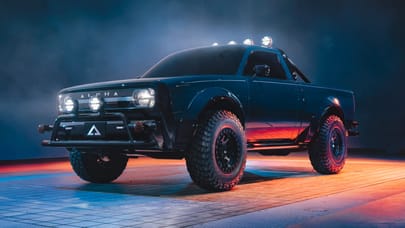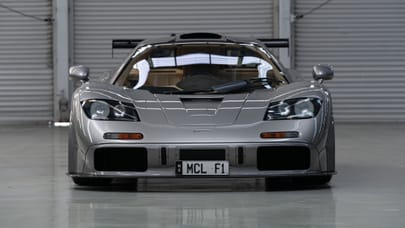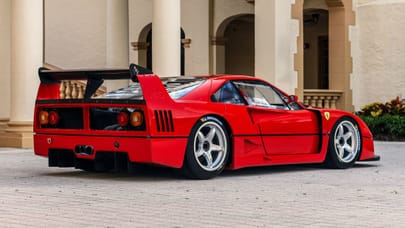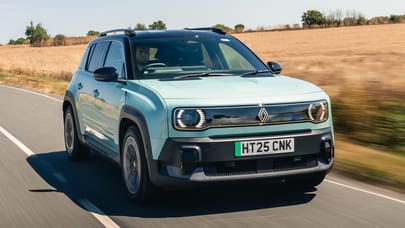

It's 1935, and American civilisation is riding the ragged summit of the Great Depression. Step forward four retired NYC policemen and their plan to enliven the spirits of their embattled countrymen with a fair; a fair to refocus New York's - and indeed the world's - citizens to a more prosperous and enriching future.
It's 1939, and the New York World's Fair opens - on the 150th anniversary of George Washington's inauguration as President - to a fanfare of pomp and celebration. There were speeches from Roosevelt and Einstein, a time capsule, rare animals, and America's first transparent car: the Pontiac Plexiglas.
And this 72-year old see-through hunk of Americana has just sold at auction for £189,000 ($308,000).
Words: Vijay Pattni
Advertisement - Page continues below
General Motors collaborated with Rohm & Haas, the chemical company who had recently developed Plexiglas. Together, they fabricated an exact replica body of the Pontiac four-door Touring saloon entirely in the transparent material and bolted it onto the chassis of a Pontiac Deluxe Six. The metal underneath was given a copper wash and all hardware, including the dash, was chrome plated. The whole thing reportedly cost $25,000 in 1939 money.

Another ‘Plexigas Pontiac' was built but disappeared over time, with this being the only remaining car. And barring the old scratch here and there, it is cosmetically solid and has covered just 86 miles. OK, so it's not a suitable car to drive, but whatever. Just look at it.
This, and a few other gems went under the hammer at RM Auctions' St Johns sale. Click through for the highlights.
Advertisement - Page continues below1932 Packard Twin Six - £677,000

This Packard remains in "very presentable condition", having spent much of its life in California and Mexico's dry climates. It features a split windshield, rear-mounted trunk, a tool roll and a couple of original Packard ashtrays. For a bit more period drama, there's even a war-era fuel ration sticker on the windscreen and an original ‘Earl C Anthony' oil change tag under the dash.

Oh, and if you're wondering, the Packard was fitted with a 160bhp ‘side-valve' V12 engine (hence the name ‘Twin Six') with a three-speed syncromesh transmission, a live-rear axle and even adjustable vacuum assisted brakes. Sold for $1,100,000.
1929 Duesenberg Model J - £433,000

Did you know the Duesenberg brothers were self-taught mechanics and car builders? Fred and August mastered in supercharging and reliability, and in 1926 they were bought out by the Auburn Automobile Company, whose CEO wanted them to create the world's greatest car to compete with Rolls, Bugatti, and Cadillac. So quite an easy task, then. The Duesenbergs responded with this, the Model J.

The chassis for the LWB version was nearly 13ft long, and each one was driven at Indianapolis for 100 miles straight under the guise of 'testing'. Underneath the bonnet sat a mammoth 6.8-litre (420 cubic inch) straight-eight powerplant that developed 265bhp. Its present-day condition is said to be "more than suitable for touring and driving events". Sold for $704,000.
Advertisement - Page continues below1955 Mercedes 300 SL Gullwing Coupe - £416,000

Thank Max Hoffman. The US importer for Mercedes-Benz implored the Daimler board of directors that a road-going version of the 300 SL racing car would sell. In droves. Daimler's top brass were unimpressed. There was likely some twirling of moustaches and much ruffling of feathers.

Hoffman however, replied with 1,000 orders for the supercar. Daimler said ‘Jawohl' and the original Mercedes-Benz 'Gullwing' was born.
A 3.0-litre straight-six producing 215bhp featured up front, a four-speed manual box in the middle and drive went to the rear. Aluminium featured heavily in the 300 SL, and the gullwing doors transferred over from the racecar because they kept the structural integrity. Not because they looked ace, obviously.
Advertisement - Page continues below
And this low weight and solid performance meant the 300 SL could accelerate to 60mph in around eight seconds. In 1955, that was a splendid level of automotive exuberance, earning it the reputation of one of the world's first ‘supercars'. Sold for $676,500.
Trending this week
- Car Review
BMW 1 Series







